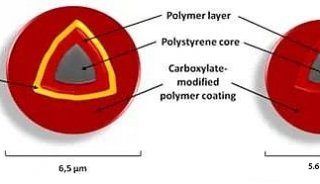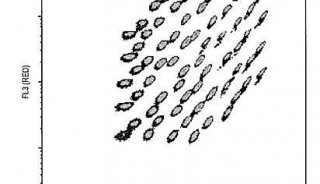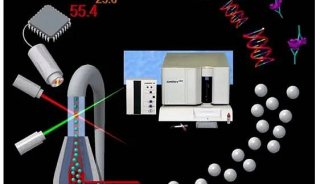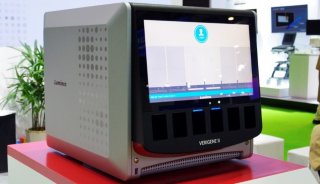多重PCR反应中关键因素和实验步骤(4)
琼脂糖凝胶与聚丙烯酰胺凝胶
琼脂糖 . 长度彼此相差 30–40bp 的多重 PCR 产物在通常使用的 SeaKem 或 NuSieve(FMC BioProducts) 3% 的琼脂糖凝胶可以很好的区分开。在低电场强度下过夜电泳可以优化每个 PCR 产物条带的电泳效果,特别是当 PCR 产物小于 400–500 bp 时。
聚丙烯酰胺凝胶 . 为了分离长度仅差几个 bp 的 PCR 产物(例如微卫星标记)需要使用浓度 6%–10% 的聚丙烯酰胺凝胶 (PAA 胶 ) 。非变性 PAA 胶可以有效的区分非多态性基因,但在这种胶上分离微卫星片断会出现不正常条带。例如在分析含有单拷贝人类第 12 号染色体的两个杂交瘤细胞系的人类第 12 号染色体上某个多态性位点时,对于每一个被检测的基因位点,在非变性 PAA 胶上都出现了两个条带 (e.g., Figure 5d) 。在常规的 6% PAA/7 M urea 测序胶上,每个被检测的基因位点都仅有一条带 ( 比较 Figure 5, d 和 e 的产物 ) 。
我们用一系列样品检测了多个参数来优化多重 PCR 。对于任何 PCR 反应,为了获得高特异性的扩增产物,退火温度和 KCl 浓度(盐浓度)的最优组合是最重要的。 Mgcl 2 浓度应当与 dNTP 的量成比例,对于任何反应这个比值可以是常数。虽然逐渐提高 MgCL 2 浓度可以增强反应的特异性,但是看起来退火温度和 KCl 浓度(盐浓度)对于获得高产量的特异性 PCR 扩增产物更为重要。在多重 PCR 中调节每一个基因的引物量也很重要。 Figure 1 给出了进行高效的多重 PCR 的有效方法。尽管无法完全列出影响 PCR 反应的所有因素。然而本研究中所提到的参数的优化提供了解决多重 PCR 中常见问题的基本方法。
参考文献
• Abbs, S. and M. Bobrow. Analysis of quantitative PCR for the diagnosis of deletion and duplication carriers in the dystrophin gene. (1992) J. Med. Genet. 29 , 191-196.
• Anonymous.. Diagnosis of Duchenne and Becker muscular dystrophies by polymerase chain reaction. A multicenter study. (1992) JAMA 267, 2609-2615.
• Ausubel, F.M., R. Brent, R.E. Kingston, D.D. Moore, J.G. Seidman, J.A. Smith and K. Struhl. 1994. The polymerase chain reaction, p. 15.1.1. -15.1.4. In K. Janssen (Ed.), Current Protocols in Molecular Biology, Vol.2. Greene Publishing Associates and John Wiley & Sons, New York.
• Beggs, A.H., M. Koenig, F.M. Boyce and L.M. Kunkel. Detection of 98% of DMD/BMD gene deletions by polymerase chain reaction. (1990) Hum. Genet . 86, 45-48.
• Chamberlain, J.S., R.A. Gibbs, J.E. Ranier and C.T. Caskey. 1990. Multiplex PCR for the diagnosis of Duchenne muscular dystrophy,p. 272- 281. In M.A. Innis, D.H. Gelfand, J.J. Sninsky and T.J. White (Eds.), PCR Protocols. A Guide to Methods and Applications. Academic Press, San Diego.
• Chamberlain, J.S., R.A. Gibbs, J.E. Ranier, P.N. Nguyen and C.T. Caskey. Deletion screening of the Duchenne muscular dystrophy locus via multiplex DNA amplification. (1988) Nucleic Acids Res. 16 , 11141- 11156.
• Crisan, D. Molecular diagnostic testing for determination of myeloid lineage in acute leukemias. (1994) Ann. Clin. Lab. Sci. 24, 355-363.
• Henegariu, O., P. Hirschmann, K. Kilian, S. Kirsch, C. Lengauer, R. Maiwald, K. Mielke and P. Vogt. Rapid screening of the Y chromosome in idiopathic sterile men, diagnostic for deletions in AZF, a genetic Y factor expressed during spermatogenesis. (1994) Andrologia 26, 97-106.
• Innis, M.A. and D.H. Gelfand. 1990. Optimization of PCRs, p 3-13. In M.A. Innis, D.H. Gelfand, J.J. Sninsky and T.J. White (Eds.), PCR Protocols. A Guide to Methods and Applications. Academic Press, San Diego.
• Mansfield, E.S., J.M. Robertson, R.V. Lebo, M.Y. Lucero, P.E. Mayrand, E. Rappaport, T. Parrella, M. Sartore, S. Surrey and P. Fortina. Duchenne/Becker muscular dystrophy carrier detection using quantitative PCR and fluorescence-based strategies. (1993) Am. J. Med. Genet. 48, 200-208.
• Mutirangura, A., F. Greenberg, M.G. Butler, S. Malcolm, R.D. Nicholls, A. Chakravarti and D.H. Ledbetter. Multiplex PCR of three dinucleotide repeats in the Prader-Willi/Angelman critical region (15q11-q13): molecular diagnosis and mechanism of uniparental disomy. (1993) Hum. Mol. Genet. 2 , 143-151.
• Saiki, R.K. 1989. Optimization of the polymerase chain reaction, p. 25-30. In H.A. Erlich, R. Gibbs and H.H. Kazazian Jr. (Eds.), Current Communications in Molecular Biology. CSH Laboratory Press, Cold Spring Harbor, NY.
• Saiki, R.K. 1989. The design and optimization of the PCR, p. 7-16. In H.A. Erlich (Ed.), PCR Technology: Principles and Applications for DNA Amplification. Stockton Press, New York.
• Shuber, A.P., J. Skoletsky, R. Stern and B.L. Handelin. Efficient 12-mutation testing in the CFTR gene: a general model for complex mutation analysis. (1993) Hum. Mol. Genet. 2, 153-158.
• Vandenvelde, C., M. Verstraete and D. Van Beers. Fast multiplex polymerase chain reaction on boiled clinical samples for rapid viral diagnosis. (1990) J. Virol. Methods 30 , 215-227.
Vogt, P.H., A. Edelmann, S. Kirsch, O. Henegariu, P. Hirschmann, P. Kiesewetter, F.M. K?hn, W.B. Schill et al. Human Y chromosome azoospermia factors (AZF) mapped to different subregions in Yq11. (1996) Hum. Mol. Genet. 5 , 933-943.
-
焦点事件
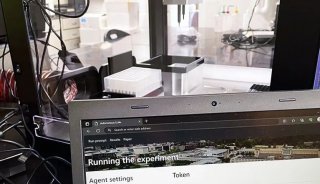
-
焦点事件

-
焦点事件

-
焦点事件

-
综述









